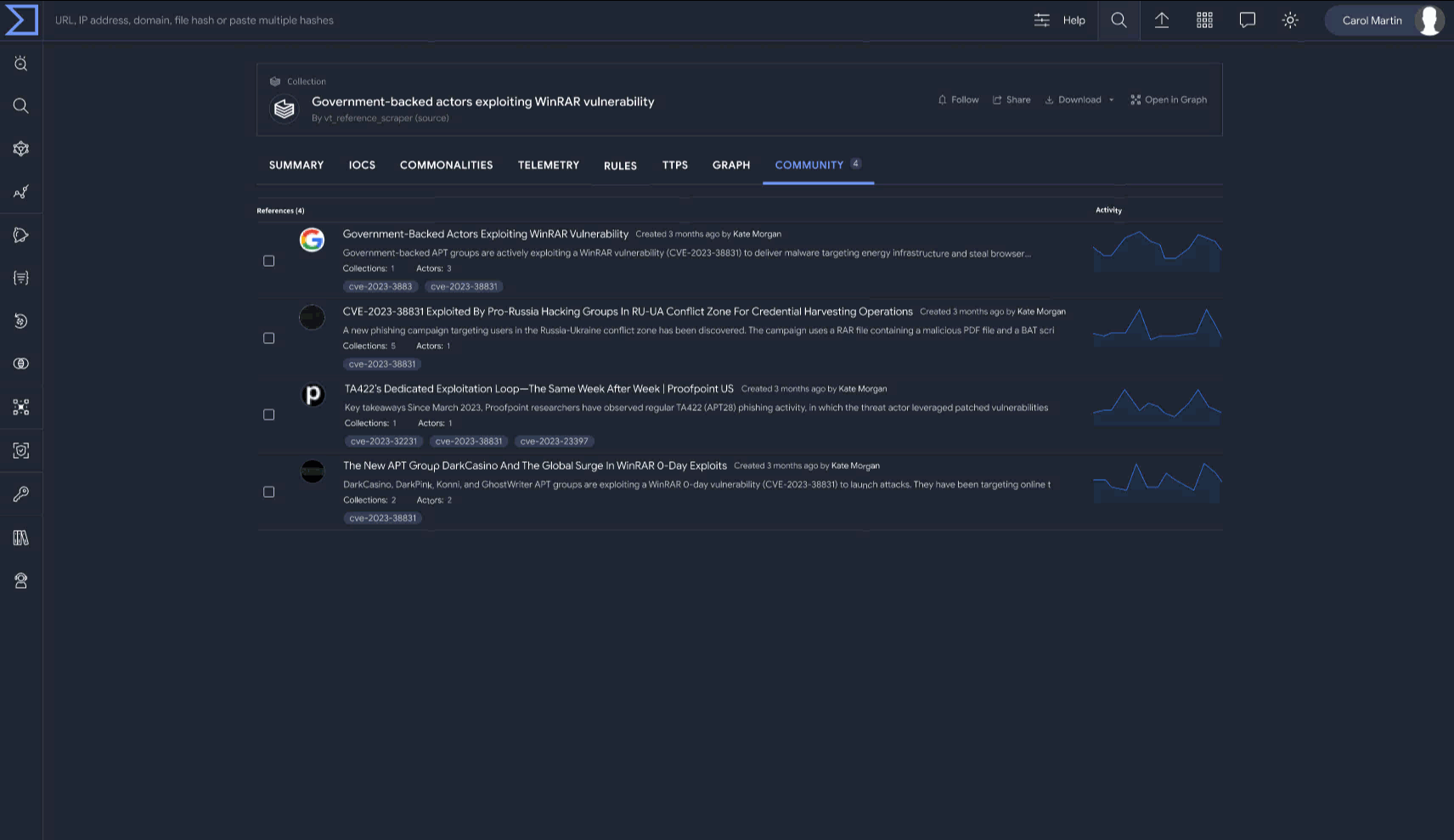Threat Profile expansion to partner collections. Threat Profile functionality is included for Google TI Enterprise and Enterprise+ customers. The Threat Profile allows users to focus on the threats that matter most to them based on varying dimensions like a customer’s industry or location of operation. Today, the product is widening the aperture of relevant threat intelligence visibility, bringing into view trusted industry and community content from industry/community players like AlienVault and Malpedia. Check out Mandiant’s Defender’s Advantage to learn more about how you can operationalize relevant threat intelligence via threat profiles in-product and through our expert services.

Threat Profiles now recommend relevant Mandiant reports, giving customers personalized, relevant reports queue by recommending relevant Mandiant reports with our proprietary ML model. The ML model is trained and tuned by Mandiant subject matter experts. Easily setup notifications so that you never miss a new relevant publication again.

Threat Profiles now support team collaboration with organization level sharing in view only mode. Threat Profile org sharing allows for teams to create a single source of truth of the threats that matter most to them by sharing with the users in your organization.

Google Insights: Cryptomining malware. We've integrated intelligence coming from Google Cloud Abuse Intelligence teams to expand visibility for Google TI customers. This allows customers to get an enhanced view to recognize IP addresses associated with Cryptomining malware. Users can also search across the entire corpus for IP addresses flagged as cryptominers by GCP Abuse Intelligence with the following search: entity:ip gcp_abuse_intelligence:miner.

Interactive malware analysis in Private Scanning (sandbox detonation). Private Scanning allows its users to “see files through VirusTotal/Google Threat Intelligence’s eyes” without making those files or their reports downloadable/visible to any 3rd-party beyond their own organizations, i.e. in a non-shareable fashion. All standard VirusTotal/Google Threat Intelligence analysis components are included (reputation, static, dynamic - sandboxes, code, similarity analysis) except for multi-antivirus scanning. As part of the dynamic analysis capabilities, files uploaded to Private Scanning are detonated in multiple sandboxes that identify filesystem, registry, process/service, network, etc. activity. We have extended our dynamic setup to support manual interactive malware analysis. Manual interaction allows analysts to connect to the detonation virtual machine during analysis and use the cursor and keyboard to act on windows/challenges/etc. that could be limiting automated analysis, e.g. resolution of captchas. This new capability can also be used to manually browse suspicious websites and use the sandbox to analyze URLs.

Weekly pro-Russia hacktivism coverage. Google Threat Intelligence incorporates finished intelligence reporting with the differentiated frontline visibility of our Mandiant experts. Based on Mandiant’s 1k+ yearly incident responses, comprehensive underground collection strategy, fusion centers, etc. analysts produce hundreds of intelligence reports each week focusing on topic areas that span cyber crime, cyber espionage, DDoS, healthcare, etc. and report types go all the way from threat activity alerts to quarterly industry focused intelligence. One of our key reporting topic areas has always been hacktivism, which is also an increasing concern for many of our commercial customers. In order to improve customer’s visibility into this threat we have extended our periodic reports with a weekly Pro-Russia Hacktivism Threat Activity Tracker. This report allows users to stay up-to-date with and proactively act on any shifts in tactics being leveraged by actors such as NoName or CyberDragon that are more involved in DDoS or Hack & Leak activity. See example of weekly Pro-Russia Hacktivism report.
(Public Preview) Google Threat Intelligence app for vulnerability response in ServiceNow. This integration brings Google Threat Intelligence's curated Vulnerability Intelligence into ServiceNow, empowering customers to prioritize vulnerabilities effectively and including Mandiant's in-the-wild weaponization score to do so in a smart threat driven fashion. Access is currently being granted on a per customer basis, so contact your support/customer success/sales representative if you are interested in using this integration and providing feedback.

IoC analysis feeds now include Google TI assessment, score and verdict. IoC analysis feeds are a continuous real-time stream of JSON-encoded structures that contain information about each indicator analyzed by VirusTotal / Google Threat Intelligence, as those analyses conclude. These streams allow users to replicate our dataset in proprietary data lakes, where they can be merged/joined with other insights or accessed in air gapped environments. These feeds are available as an add-on to your Google TI Enterprise+ license and will now include Google TI assessment, score and verdict for each indicator along with all the previous available metadata. As a refresher, on average these streams publish 2M+ file analyses per day, 6M+ URL analyses per day, 10M+ domain analyses per day, 2M+ IP address analyses per day.





